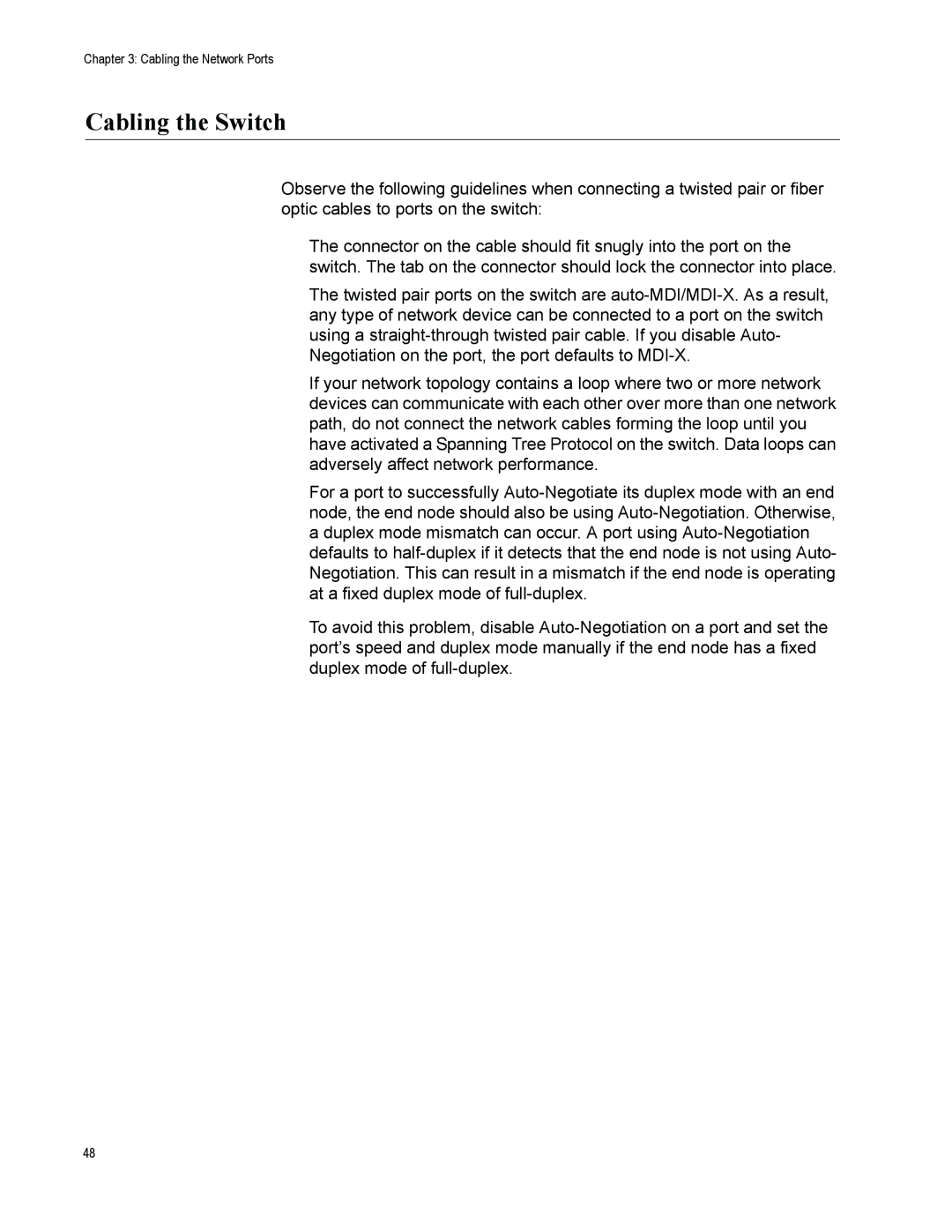Chapter 3: Cabling the Network Ports
Cabling the Switch
Observe the following guidelines when connecting a twisted pair or fiber optic cables to ports on the switch:
The connector on the cable should fit snugly into the port on the switch. The tab on the connector should lock the connector into place.
The twisted pair ports on the switch are
If your network topology contains a loop where two or more network devices can communicate with each other over more than one network path, do not connect the network cables forming the loop until you have activated a Spanning Tree Protocol on the switch. Data loops can adversely affect network performance.
For a port to successfully
To avoid this problem, disable
48
